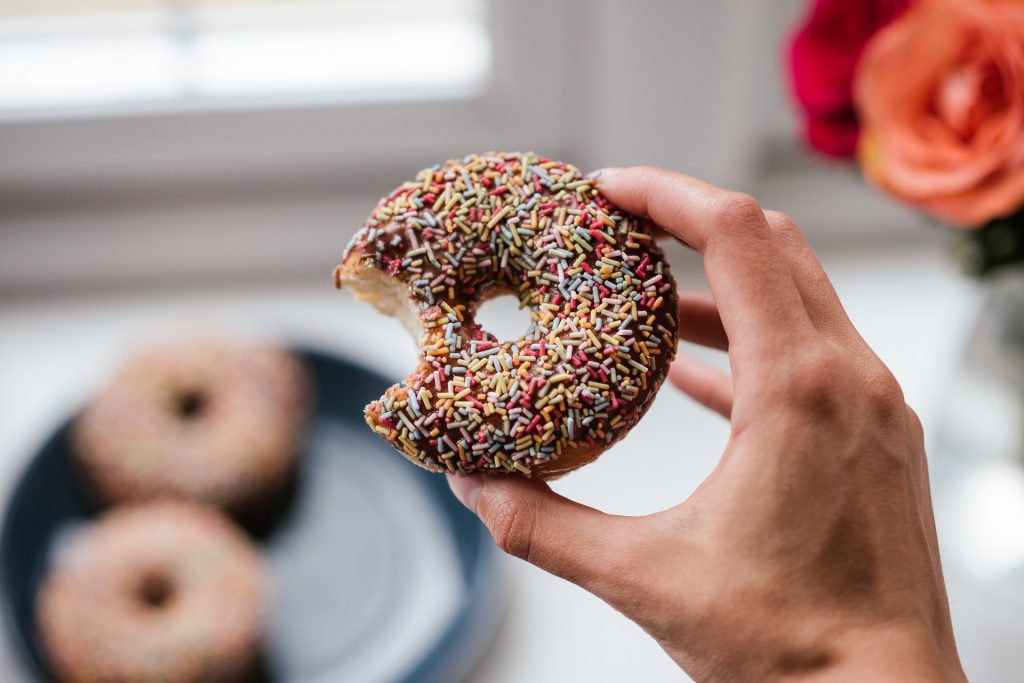

If you are wanting to achieve all the benefits of a low sugar diet as suggested here [link to sugar and wellbeing blog], then here are a few tips to help you achieve this.
Reduce the foods that spike your blood sugars
The most obvious thing to do when aiming to have a low sugar diet is of course to reduce the amount of sugary foods that you consume. But what counts as a sugary food? Some foods are relatively obvious … you know … the foods that taste sweet. The cakes and cookies, the chocolate bars and sweet fizzy drinks. But other foods that we would have as part of a savoury meal such as pasta, rice and bread, also break down into sugars and may therefore affect us in a similar way.
The key here is to opt for foods that have a lower glycemic load (GL – a measure used to describe the extent to which a food spikes our blood sugars per serving). For example:
- Wholegrain versions of grains will have a lower glycemic load than their processed white counterparts, so these are preferable.
- Not all fruits are the same, so opt for lower GL fruits such as apples, pears, berries, rather than fruits such as grapes, mangoes and pineapple.
- You may want to avoid making the main bulk of your meal grain-based. For example, if choosing to have some brown rice or pasta, rather than having a whole plate of risotto or spaghetti, consider having it as a portion of your plate together with some protein and a whole load of veggies.
Consume protein with every meal
Ensuring that you are eating protein with your meal means that the carbohydrates that you consume in the meal will be digested and absorbed more slowly, thereby not giving you as much of a spike in sugars. So how can we incorporate this on a practical level in our meals? Some suggestions include:
- having some nuts and seeds together with your fruit snack
- adding nuts and seeds to your morning porridge
- ensuring that when you do have a plate of pasta or rice, you add some protein to it such as salmon or chicken
- including eggs, which can make a really great protein rich breakfast or snack
- eating good sources of protein such as lean meat, wild fish, eggs, quinoa, buckwheat, lentils, beans, soya and all pulses
Eat 3 meals a day
Historically the thinking was that in order to keep our blood sugars balanced, we needed to eat at least something small every 3 hours or so, and therefore have 5-6 smaller meals a day. However more recent research suggests that sticking to 3 balanced meals a day is better for our immediate and long-term sugar management in comparison to lots of snacking. So you want to make sure that in those 3 meals, you are eating enough to keep you satisfied until the next meal-time.
Exercise!
Exercise and moving your body are pretty good for many things. One of the ways in which it is beneficial is that it increases insulin sensitivity. It helps our bodies to be more efficient in getting sugar into the cells and using it for energy. The result of this is that sugar and insulin don’t hang around in high levels for too long, especially in the context of a balanced diet. Specifically, it is muscle that enables this because muscle cells have a high number of insulin receptors, so rather than only doing cardio, make sure that you work to increase your muscle mass as well. That doesn’t mean you have to become a bodybuilder, but just increase your muscle to fat ratio.
Just add cinnamon!
½ tsp cinnamon a day has been found to improve insulin sensitivity, so add some to your breakfast, your smoothie or your winter soups. Easy, delicious and healthy 🙂
If you are a snacker, click here for some low sugar snacks and light bites ideas and recipes.
For more information, please visit my website www.nurturebyfran.co.uk
